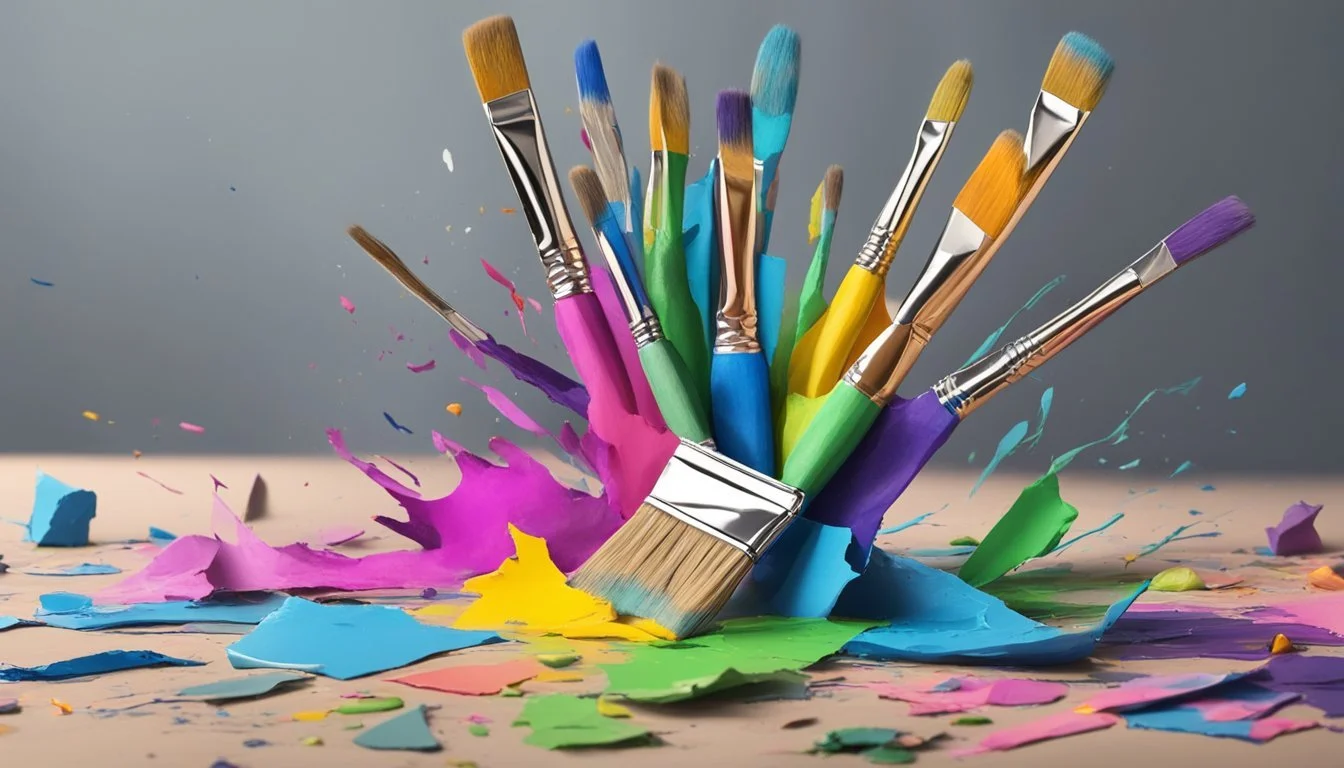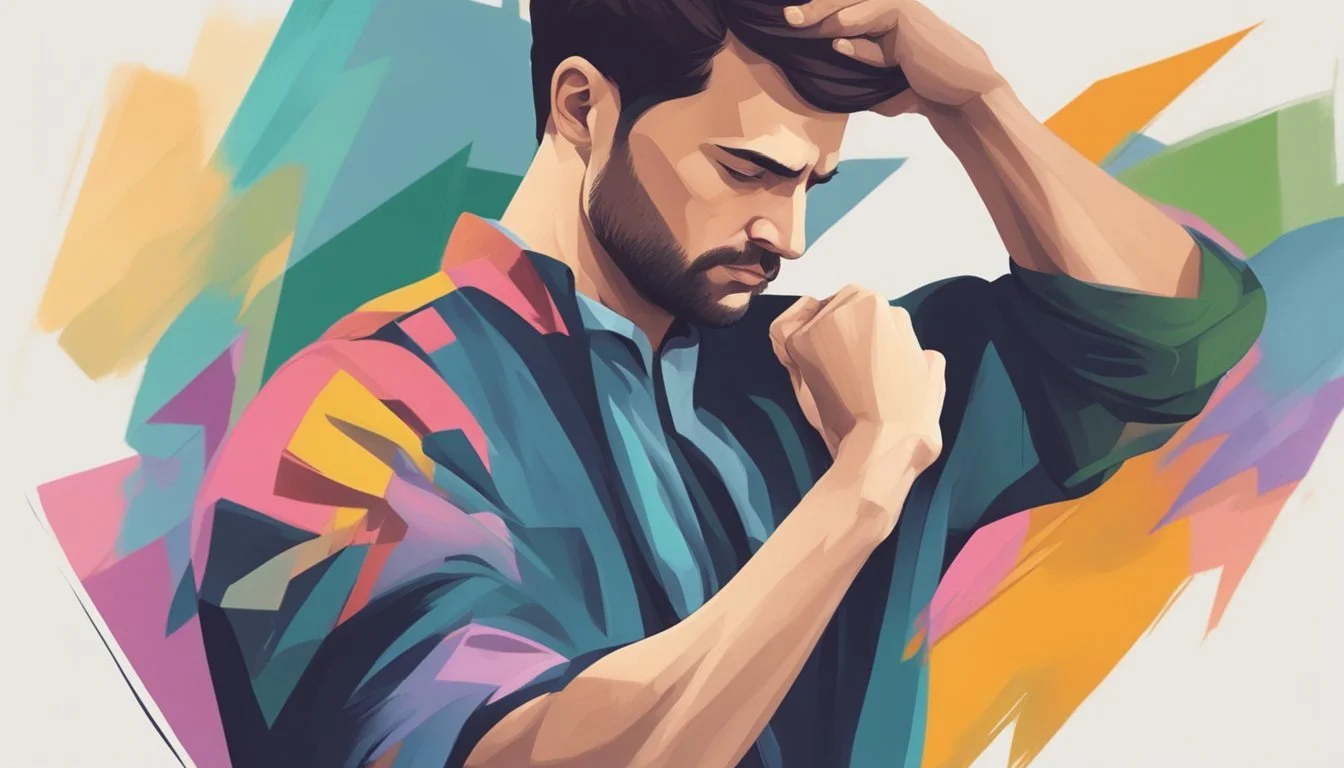9 Ways Trauma Can Impact Your Relationship with Art
Essential Insights
Trauma can deeply affect various aspects of an individual’s life, including their relationship with art. This article explores the multifaceted ways in which traumatic experiences shape one's interaction with and perception of creative expression. Understanding these impacts can provide greater insight into the therapeutic potential of art for those who have experienced trauma.
While some may find that trauma stifles their creativity and disrupts their artistic pursuits, others might discover that art becomes a vital mode of expression and healing. This discussion aims to uncover the diverse effects of trauma on artistic engagement and the potential for post-traumatic growth through creative mediums.
1) Increased Vulnerability to Art Criticism
Individuals who have experienced trauma may find themselves more sensitive to criticism of their artistic work. This heightened vulnerability can stem from an already fragile emotional state.
Trauma often disrupts self-esteem and confidence, making negative feedback harder to process. When a person invests emotionally in their creative pursuits, criticism can feel like a personal attack.
Trauma can also affect one's perception of the feedback. Constructive critiques might be misinterpreted as harsher than intended, due to heightened emotional sensitivity.
Ultimately, this increased vulnerability to criticism can deter individuals from sharing their art. They may fear judgment, further isolating them from potential supportive communities.
By understanding this dynamic, both artists and their support networks can better navigate the complexities of feedback and creativity. Art therapy serves as a helpful approach, offering a safe space to express and process emotions related to trauma.
2) Emotional Detachment from Creative Expressions
Emotional trauma often leads to a sense of detachment from one's creative expressions. This detachment occurs when individuals struggle to connect emotionally with their art due to past traumatic experiences. Emotional suppression becomes a defense mechanism, making it challenging to access the inner emotions that fuel creativity.
This phenomenon can make the creative process feel mechanical and uninspired. The legacy of trauma often steals a person's sense of agency and curiosity, crucial elements for genuine artistic engagement.
Trauma disrupts the emotional creative space, leading to a persistent feeling of disconnection. Artists may find it hard to trust their own creative instincts, hindering their ability to produce authentic and impactful work. This lack of trust can create an ongoing struggle with self-expression.
Emotional detachment also affects how individuals perceive feedback and validation. They might become overly dependent on external validation, as noted here, instead of drawing confidence from within. This dependency can further alienate them from their innate creative potential.
3) Hyperawareness of Negative Themes
Trauma can create a heightened sensitivity to negative themes in art. Individuals with trauma may find themselves intensely aware of elements like violence, grief, or loss in artworks. This hyperawareness can limit their ability to engage with certain pieces, as they might trigger distressing memories or emotions.
Some individuals may deliberately avoid art that contains triggering content. This avoidance is a protective measure to prevent emotional distress. However, it can also limit their exposure to a wide range of artistic expressions.
Engaging with art that depicts negative themes can also serve as a complex coping mechanism. For some, it allows them to process and externalize their trauma. This interaction can be both therapeutic and distressing, depending on the context and the individual's current state.
Hyperawareness of negative themes may also lead to a deepened connection with certain works of art. Individuals might find solace in knowing that their experiences are represented and validated. This can foster a sense of understanding and connection.
Art therapists often use this sensitivity as a tool for healing. By guiding individuals through the exploration of challenging themes in a safe environment, they can help them process and integrate their traumatic experiences.
4) Difficulty in Expressing Personal Trauma Through Art
Individuals may struggle with expressing their personal trauma through art due to the deeply personal and often painful nature of their experiences. Trauma can create intense emotional barriers, making it hard for a person to translate their feelings into creative forms.
The fear of judgment or misunderstanding can also inhibit creative expression. Trauma survivors might worry about how their art will be perceived by others, leading to self-censorship.
Sensory overload can be another obstacle. Certain artistic mediums may trigger unwanted memories or emotions, complicating the process. This can make some forms of art feel more like an emotional burden rather than a release.
Additionally, trauma can impact cognitive functions like concentration and memory. This makes it challenging to develop artistic ideas or complete creative projects, leaving expressions of trauma fragmented and unresolved.
Perfectionism can also pose a barrier. Trauma survivors might feel immense pressure to perfectly capture their experiences in their art, stifling their creativity.
For individuals conditioned to suppress emotions, accessing feelings for artistic expression can be difficult. Creating art may feel uncomfortable or unnatural due to ingrained habits of emotional suppression.
Finally, some survivors may lack the necessary skills or training to effectively convey their trauma through art. Without the right tools or techniques, the process can feel frustrating and fruitless.
These various challenges demonstrate how complex and multifaceted the relationship between trauma and artistic expression can be.
5) Association of Art with Painful Memories
Art can sometimes evoke painful memories for individuals who have experienced trauma.
Certain colors, shapes, or themes in art might remind them of traumatic events. This can trigger emotional responses, making it challenging for them to engage in creative activities.
The association between art and trauma may be linked to the sensory and emotional pathways in the brain. Trauma survivors might avoid art altogether due to these distressing associations.
For some, this avoidance can prevent them from accessing the therapeutic benefits of art therapy, which can aid in healing.
This response is not uniform; the impact varies based on individual experiences and the nature of the trauma. Some people may feel overwhelmed, while others might become desensitized over time.
Recognizing these associations is crucial for mental health professionals. Tailoring therapeutic approaches can help individuals work through these painful memories while fostering a supportive environment.
Understanding these associations ensures a more empathetic and effective approach in using art as a tool for healing trauma. This strategy can facilitate a better relationship with art, enabling individuals to gradually reconnect with their creative selves.
6) Aversion to Certain Artistic Styles
Trauma can lead individuals to develop an aversion to specific artistic styles. For some, abstract art may trigger feelings of discomfort or confusion due to its lack of clear structure.
Others may shy away from realistic or graphic styles if they evoke unwanted memories or emotions linked to their trauma. This can limit their engagement with various forms of art.
In addition, the bold and intense colors in some art pieces can be overwhelming. A person might avoid these works to prevent exacerbating their emotional distress.
Artistic mediums, such as photography that captures raw human emotions, can also be challenging. This medium might remind individuals of their own experiences, leading to feelings of unease or discomfort.
Individuals experiencing trauma may prefer more subdued or structured styles. Minimalist and calming art forms might offer a sense of safety and predictability.
Understanding these preferences is crucial for those using art therapy to navigate and heal from trauma. Tailoring the artistic experience to avoid triggers can enhance the therapeutic benefits of creative expression.
For further reading on the impact of trauma on creativity, you can explore this article.
7) Anxiety When Creating New Art
For many individuals who have experienced trauma, creating new art can trigger anxiety. This apprehension stems from the fear of confronting vulnerable emotions, as art often serves as a direct conduit to one’s inner self.
Trauma can disrupt a person’s trust in their creative abilities. Previous negative experiences might cast shadows, making the thought of producing new work daunting.
In addition, the anxiety around creation is linked to perfectionism. Traumatized individuals may set impossibly high standards for their art, fearing judgment and criticism.
There’s also the pressure of self-expectation. Artists may feel overwhelmed by the need to replicate past successes or constantly improve their skills, which can hinder the creative process.
Anxiety can make the act of starting a new piece feel overwhelming. This can lead to procrastination and avoidance behaviors, further stifling creative expression.
Engaging with art therapeutically can help manage this anxiety. For instance, trusting the creative process through structured art therapy for trauma can provide relief.
Creating in a non-judgmental environment encourages experimentation and can alleviate some of the fears associated with new artistic endeavors.
8) Preference for Art That Aids in Healing
Individuals who have experienced trauma often develop a preference for art forms that provide a sense of healing and comfort. Art allows them to process emotions in a safe, non-verbal manner.
Creative activities like painting, drawing, or sculpting can help externalize internal struggles. This makes the trauma more tangible and manageable, facilitating emotional release.
Healing-oriented art forms, such as those used in art therapy for trauma, are particularly popular. These methods emphasize expression and understanding, guided by trained professionals.
Trauma survivors may gravitate towards art that incorporates soothing elements. This could include calming color palettes, gentle themes, or repetitive patterns that offer a sense of stability and control.
By focusing on the act of creating, individuals can shift their attention from the pain of their experiences to the therapeutic process of making art. This shift promotes healing and can reduce symptoms of PTSD.
9) Struggle to Find Inspiration
Trauma can severely impact one's ability to find inspiration. It often invades the emotional creative space, making it difficult to explore ideas freely. The emotional weight of trauma can cloud the mind, overshadowing the spark of creativity.
Individuals may find it challenging to connect with their inner artist. The sense of curiosity and exploration necessary for artistic expression can feel stifled. Creativity often requires a mental and emotional openness, which trauma can constrict.
Some people may struggle to trust their own creative processes after experiencing trauma. This mistrust can lead to self-doubt, further hampering artistic endeavors. The constant battle with these intrusive thoughts makes it hard to focus on creating art.
Artistic pursuits require a certain level of emotional investment. Trauma can disrupt this commitment, leading to an inconsistent creative output. This inconsistency can be frustrating and demotivating for artists trying to regain their creative flow.
The legacy of trauma, with its myriad forms and shades, affects people differently. For many, the search for inspiration becomes a daunting task rather than an enjoyable exploration.
Finding ways to navigate through these challenges is crucial. Engaging with a therapist or a supportive community might help in overcoming these emotional hurdles. Seeking professional help can provide tools to manage these struggles effectively.
Understanding the Connection Between Trauma and Art
Experiencing trauma can profoundly shape an individual's relationship with art. Art serves as a powerful medium for expressing, processing, and healing from traumatic experiences.
The Psychological Impact of Trauma
Trauma significantly affects mental health, often leading to conditions such as PTSD, anxiety, and depression. Individuals may experience intrusive thoughts, emotional numbness, and heightened arousal. These symptoms disrupt daily life and emotional stability.
Traumatic experiences can alter one's perception of reality, leading to feelings of isolation and a disconnection from self and others. This disjointed state underscores the need for therapeutic interventions that foster emotional processing and reconnection.
The Role of Art in Healing
Art therapy emerges as a vital tool in trauma recovery, providing a non-verbal outlet for expressing complex emotions. Creating art allows individuals to externalize their trauma, making it tangible and manageable. This process helps in processing traumatic memories safely.
Art activities, such as painting and sculpting, offer a safe space to explore and express feelings without fear of judgment. Engaging in art-making helps in regaining a sense of control and fostering emotional regulation, promoting overall well-being and resilience.
Connecting with art in therapeutic settings can lead to increased self-awareness and emotional healing, making it an essential component of trauma recovery.
How Trauma Influences Artistic Expression
Trauma can have profound effects on an individual's artistic expression, impacting both the chosen artistic style and medium, as well as incorporating specific symbolism and themes into their work.
Changes in Artistic Style and Medium
Trauma can lead artists to experiment with different styles and mediums. They may shift from painting to sculpture or from detailed realism to abstract forms.
This change can reflect the inner turmoil and transformation experienced by the individual. Some artists might turn to more tactile mediums such as clay or textile, emphasizing the need for a physical connection to their work.
Artistic styles can become more fragmented or chaotic, mirroring the disturbed mental state. Conversely, some may adopt extremely controlled and meticulous styles as a means of regaining a sense of control over their environment.
Symbolism and Themes in Trauma-Informed Art
Trauma often introduces recurring themes and symbolism in an artist's work. Motifs such as brokenness, healing, and rebirth are common. These symbols can serve as a visual representation of the artist's internal struggles and their journey towards healing.
The use of color can also be significant. Darker hues might dominate the palette initially, reflecting pain and sorrow, while lighter, more vibrant colors may emerge as the artist progresses in their recovery.
Through these symbols and themes, art becomes a narrative tool, allowing individuals to communicate experiences that are difficult to articulate in words.
Practical Ways to Use Art for Trauma Recovery
Engaging in creative activities can provide a safe outlet for expressing feelings that may be difficult to articulate. Individuals can explore various artistic mediums, such as drawing, painting, or sculpting, to process their emotions.
Art Journaling: Keeping an art journal allows individuals to visually document their experiences and progress. It combines writing with creative expression, providing a dual approach to healing.
Music Therapy: Listening to or creating music can help process trauma. Songs can evoke memories and emotions, offering a therapeutic release.
Medium Benefits Drawing Enhances self-awareness and expression Painting Aids in emotional release and relaxation Sculpting Provides a tangible way to externalize trauma
Dance and Movement: Physical expression through dance can help release pent-up emotions. It encourages connection between mind and body, aiding in the recovery process.
Group Art Sessions: Participating in group sessions fosters a sense of community and shared experiences. It reduces feelings of isolation often associated with trauma.
Art therapy can offer a non-verbal way to communicate and cope with traumatic experiences. Engaging in creative activities can be a stepping stone towards emotional healing and resilience. For more in-depth information, refer to the benefits of art therapy and creative expression in trauma recovery.









